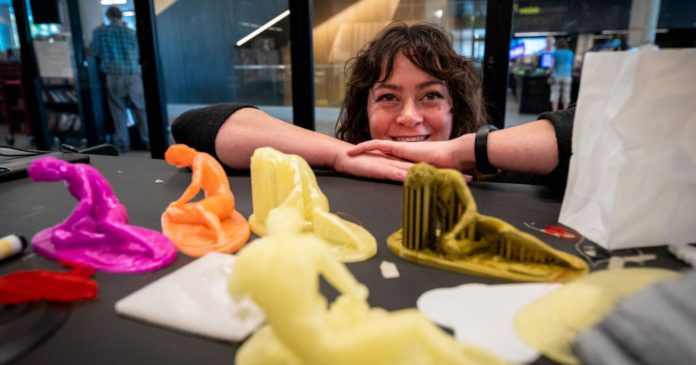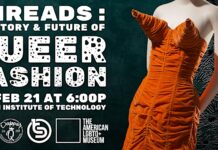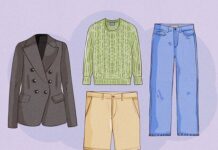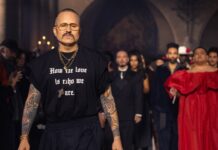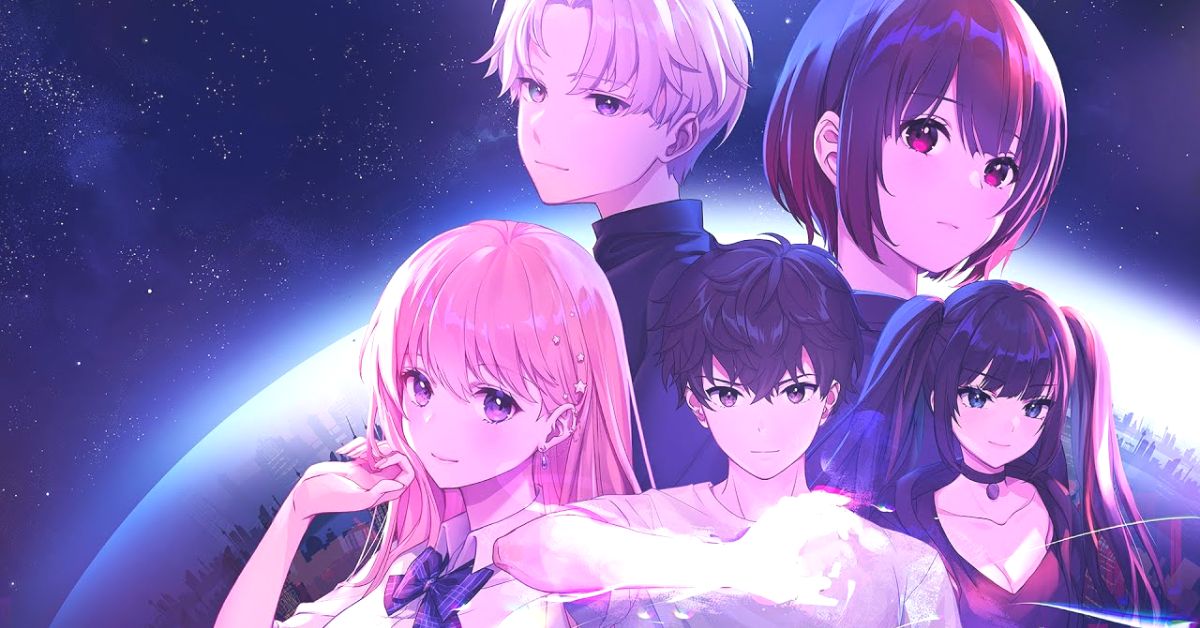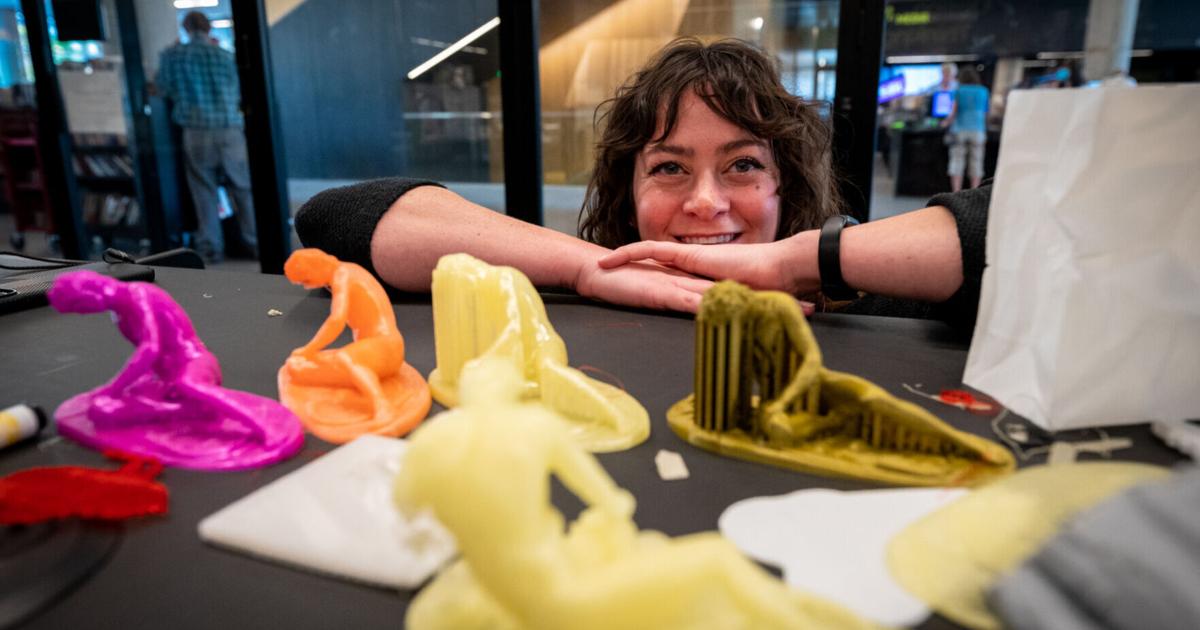
Cait Finley, a Missoula sculptor, produced a series of pieces called “The Garden of Earthly Delights,” based on the hallucinatory architecture from Hieronymus Bosch’s triptych of the same name. She exhibited them last year at the University of Montana, where she teaches art classes, for a faculty show.
Recently, she’s been figuring out ways to digitally preserve and experiment with them at the Missoula Public Library’s MakerSpace. The sculptures, which have intricate (and delicate) forms, aren’t easy to move, ship or store. After scanning them in 3D with a phone app called Polycam, they’re suddenly portable in high resolution. Point the phone into an open space just outside the MakerSpace’s glass doors, or along trails on the Clark Fork River, and a larger-than-life version appears on her screen. She can zoom in, allowing a viewer to wander through portions of it, not unlike one of the tiny characters in Bosch’s painting.
People are also reading…
Scanning them allows for new creative avenues like the ones she’d been exploring and an interactive 3D record of the work that’s accessible after a gallery show is over.
She’s long wanted to make scans of her work and place it in virtual reality spaces. She tried creating through coding, but scans seem like the best fit. And applying for a residency provided the space and time.
“I’ve had access to these tool sets before, but I’ve never been able to figure out how to actually use them in my practice, which is very tactile and exploratory,” she said.
Finley has open access to the MakerSpace, its 3D printers and other tools and the staff for six weeks through Open AIR (short for artist-in-residence), a nonprofit program from Western Montana Creative Initiatives that connects artists with sites of environmental, historical or scientific interest for weeks-long residencies. It provides them with the time and space to spur new placed-based creative ideas outside of their studio work and daily life.
Summer season
Open AIR was founded four years ago by artist-executive director Stoney Samsoe and Missoula painter Hadley Ferguson. The program brings in artists from Missoula, the state as a whole, and from around the country.
While the pandemic initially made travel and site programs tricky, Samsoe said the 2022 year has gone “smashingly well,” with strong interest in participation from artists and their site partners, including new ones.
The variety of work happening around western Montana at the moment is broad. Missoula native Bill Bowers has gained national recognition for his work in miming and theater — he played Zazu in “The Lion King” on Broadway. He’s spending his residency in the town of Philipsburg — the broadest definition of “site” in the program. He’s writing a memoir, which Samsoe said is deals with the ideas of silence — both in his professional work and his upbringing as a gay man in Montana. He’ll give a workshop on miming from 2-3 p.m. at the historic Philipsburg Theatre on Saturday, July 23, and then give a performance and talk at 7 p.m. Both are free.
Another Philipsburg artist, Rachael Marjmaa, is working on paintings and teaching workshops for adults and children that Samsoe said have been popular.
Angela Cieslewitz-Pierson, a painter, was paired with the Travelers’ Rest State Park in Lolo. Jennifer Ogden, a mixed-media artist, has one of the science-oriented locations: The Flathead Lake Biological Station.
Similarly, musician Jessi Harvey and dancer Julyn Wildman are working separately at the Emlen Evolutionary Biology Lab. To give a more concrete idea of the results of a dancer and composer at work in a science lab, you can head to their performance on Wednesday in the Masquer Theatre.
Samsoe said that Harvey has been exploring ideas of tone and rhythm in beetle life, such as a classical piece that draws on their mating “songs,” and a techno piece that draws on their sounds.
Wildman, meanwhile, has been constructing “wearables” out of cardboard and studying the insects’ movements for dance pieces.
Stella Nall is working at the University of Montana School of Law. Nall, who is a Crow descendant, works in mixed media, often with themes of identity and traditional symbols integrated with real and imagined wildlife. Some of her work will be seen in a group exhibition at the Radius Gallery that opens on Friday, July 28.
The Open AIR will continue with a fall session, including nine artists at five sites. Further ahead, the program is exploring additional residency sites, including a partnership with American Prairie, the private, nonprofit wildlife reserve in northeast Montana.
New directions to share
Besides the time to work, Finley said the stipend was important, and so is the talk — there aren’t many regular art lectures in Missoula, and they can offer a chance for people to visit sites that they may not have before.
Finley will give her talk on Monday, July 25, at 4 p.m. in the MPL, where she’ll also share some of the 3D printing that she’s been working with. She has access to tools like these through the Innovation Factory at UM and the MPL, but not always enough free hours in the week to figure out how to bend the tools toward artistic ends.
“It’s really important to have a chunk of time that’s dedicated to exploration,” she said.
She printed versions of “The Dying Gaul,” a Roman sculpture with an honorary mood that led many to believe it was a Roman for hundreds of years. Later, it was discovered to be a Gaul, whom the Romans pushed from their territory, and commemorated with as a “worthy adversary,” she said.
In one iteration, she scanned her own body mimicking its weary pose, but replaced the sword and shield with a beach towel and a bottle of water.
In other takes on the Gaul, she played with the settings in the 3D printer software, which created vertical streams of lines from his body reaching down to the floor, as though it were a visual effect from a science fiction movie.
She’s also been able to “invest in some new technology that will help me go forward outside of this space,” and the results could be seen in her work much farther down the line when she’s had more time to pursue the ideas and techniques.
She’s also been tinkering with “artifacts” of the process. Using the software as it’s intended gives you a “novel object,” she said, but when things go slightly awry, it results in something unexpected.
“You see these things that are wrong — but far more interesting,” she said.

